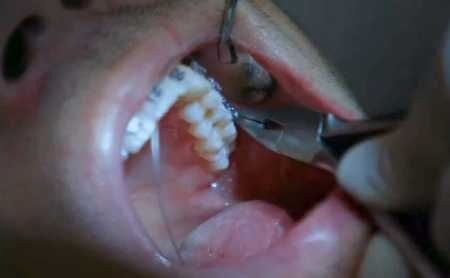Although there are several options for braces to correct bites and crooked teeth, metal braces remain one of the most practical, and treatment is relatively faster in most cases.
When Dental Braces are Required
The immediate need for treatment, when clinically indicated, is due to objective reasons. Bite correction is not only an aesthetic solution to a problem. More importantly, bite correction has an impact on the correction of the dento-alveolar system.
Treatment with braces is gradually and firmly coming into vogue. Not only children/adolescents, but also adults can be found among the people who receive such orthodontic treatment. Objectively speaking, this is a good thing: the psychological factor had quite a significant impact on the position of the person who needs a bite correction (the presence of “braces in the mouth” and the fact that these “braces” are visible to others could stop many from having braces installed). Now that this type of orthodontic treatment is gaining popularity, it is becoming easier for patients to take the appropriate treatment course from a psychological standpoint.
The immediate need for treatment, when clinically indicated, is due to objective reasons. Bite correction is not only an aesthetic solution to a problem. More importantly, bite correction affects the correction of the dentoalveolar system. These include:
- The ability to eat fully (this factor, in turn, determines how the digestive system works);
- Speech formation;
- Temporomandibular joint health;
- Risk level of dental and soft tissue disease;
- Not only the aesthetics of the teeth, but also the overall aesthetics of the face.
The immediate need for treatment, when clinically indicated, is due to objective reasons. Bite correction is not only an aesthetic solution. More importantly, bite correction affects the correction of the dentoalveolar system. These include:
- The ability to eat fully (this factor, in turn, determines how the digestive system works);
- Speech formation;
- Temporomandibular joint health;
- Risk level of dental and soft tissue disease;
- Not only the aesthetics of the teeth, but also the overall aesthetics of the face.
Treatment with braces has been practiced in orthodontics for quite some time. Thus, there is a “classic” in this area of dentistry. Metal orthodontic appliances for bite correction are considered such a classic. Of course, over time, there are systems based on other materials designed to eliminate the disadvantages of metal systems.
A little more about this. When they say “braces”, they mean a braces system. Braces are small platforms (plates) that are attached to the teeth. These plates themselves have grooves into which the arch fits. The correct position of the arch in the grooves is secured with structural elements called ligatures (ligatureless designs are also used). Basically, this is what a braces system consists of.
How Are the Teeth Repositioned and Corrected?
“The driving force” of a brace system is the arch. Initially it is used to set the “correct” (final) position of the teeth. When the arch is fixed in the brace, it pulls the teeth to get the “right” position. This is the general principle of how braces work.
Price for Metal Braces
Correcting the bite is a long process. The patient must wear the brace system on their teeth for the entire period of time; and it is constantly visible to others. To solve this problem, there is another solution: lingual braces (instead of the “classic” vestibular braces), which are attached to the “inside” of the teeth, that is, on the side of the tongue. The aesthetic component wins, but there are other problems: the construction is difficult to fit, difficult to maintain, affects the quality of eating, has a stronger effect on speech, is much more difficult in terms of hygiene.
Metal braces, also referred to as “traditional” or “classic” braces, are the most optimal when considering the price-quality ratio. Depending on complexity (curvature of the teeth, condition of the jaw, etc.) the price in the United States ranges from $3,000 to $7,800. Of course, the orthodontist who reviews your case will tell you the exact cost.
There is another way to solve the aesthetic problem: change the material of the braces. Ceramic braces are matched to the color of the enamel. In addition to ceramic braces, sapphire (transparent) braces are also used. Even though the braces are “masked”, the general aesthetics of the design is still quite conditional, because the metal arch is used, and it is also visible.
Metal braces are the most durable. Ceramic braces are not as strong as metal braces (in order to maintain the durability of ceramic braces it is very important for the patient to follow the doctor’s instructions regarding the use of the system – type of feeding, care, etc.). While ceramic braces outperform ceramic ones in terms of aesthetics, they are not as strong as ceramic ones. Meanwhile, the strength characteristics are very important in terms of overall treatment duration. If the braces fails, it must be replaced, and this affects the timing of orthodontic correction.






